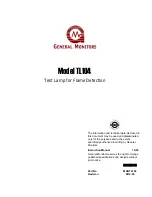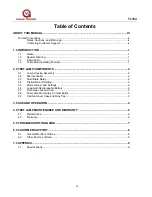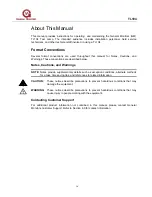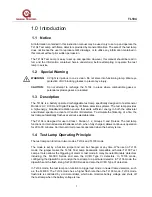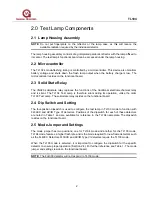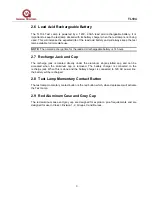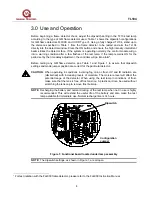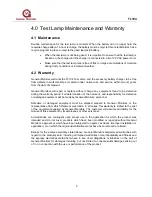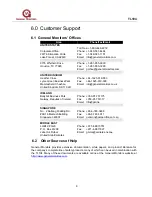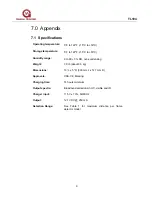
TL104
2.0 Test Lamp Components
2.1 Lamp Housing Assembly
NOTE:
Do not put fingerprints on the reflector or the lamp case, as this will reduce the
available radiation required by the individual detector.
The lamp housing assembly consists of a gold-plated parabolic reflector with the lamp affixed to
its center. The test lamp’s functional board can be accessed under the lamp housing.
2.2 Microcontroller
The TL104’s mode-flashing timing is controlled by a microcontroller. This device also monitors
battery voltage and shuts down the flash lamp output when the battery charge is low. The
microcontroller resides on the functional board.
2.3 Solid State Relay
The VN920 solid-state relay replaces the functions of the traditional electromechanical relay
and is silent. The TL104 Test Lamp is therefore silent during its operation, unlike the older
TL103 Test Lamp. The solid-state relay resides on the functional board.
2.4 Dip Switch and Setting
The four-position dipswitch is used to configure the test lamp in TL103 mode to function with
FL3XXX and UV/IR Type VI detectors. Positions of the dipswitch for each of these detectors
are noted in Table 1 and are available for reference in the TL104 nameplate. The dipswitch
resides on the functional board.
2.5 Mode Jumper and Settings
The mode jumper has two positions, one for TL104 mode and another for the TL103 mode.
TL104 mode features a higher flash rate and is the mode required for new flame detectors such
as the FL4000. Detectors FL3XXX and UV/IR Type VI detectors require the TL103 mode.
When the TL103 mode is selected, it is important to configure the dipswitch for the specific
detector to ensure proper operation (Section 2.4). For further reference see Table 1. The mode
jumper and settings reside on the functional board.
NOTE:
The FL4000 detector will not respond to TL103 mode.
2

